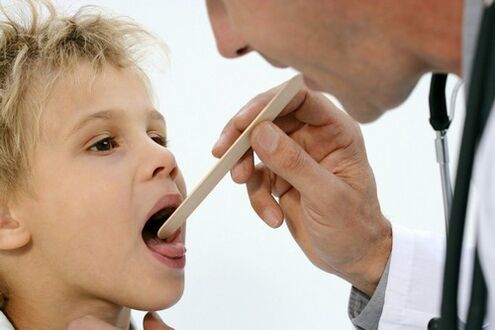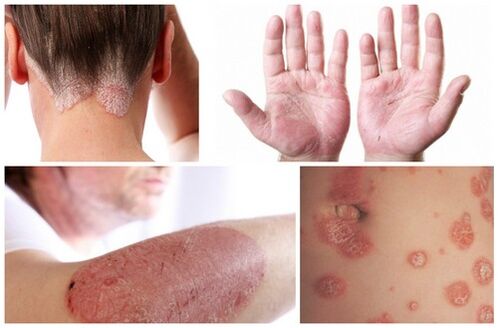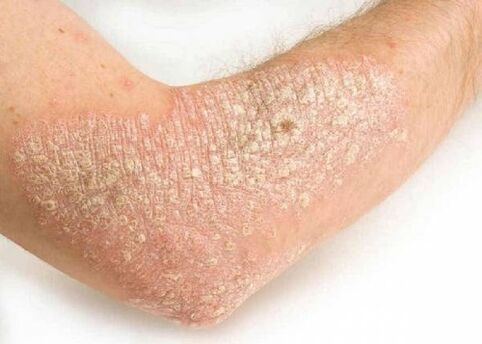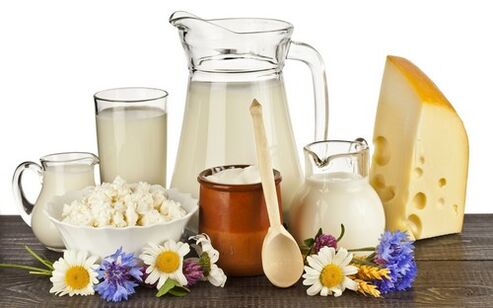According to estimates by WHO experts, psoriasis is a disease that affects 2% to 4% of the global population. A feature of this disease is that only white representatives suffer from psoriasis. Determining the cause and treatment of psoriasis is considered one of the priority tasks of modern medicine. Today, science has made great progress on these issues, but the causes of this disease have not yet been fully understood, just as a complete cure for this disease has not yet been found.

Causes of psoriasis
Physiologically, psoriasis is caused by the short life cycle of skin cells. If the cycle is usually 21 to 28 days, then the cycle of psoriasis patients only needs 3-6 days. This is what causes the formation of psoriasis plaques. The main reason for this phenomenon is the dispute between experts. Although some people believe that psoriasis is a disease caused by genetic factors, others believe that this disease is the result of immune system dysfunction, which is a direct consequence of a series of various external factors.
Today, among doctors, multi-factor theory prevails, which explains the occurrence of psoriasis for the following reasons:
- Genetic
- Causes of immune system malfunction:
- Postponed infectious disease;
- Improper nutrition;
- Abuse of alcohol;
- Adverse weather conditions.

However, absolutely all experts agree on one thing, psoriasis is not a contagious disease, it is impossible to "infect" it on the street like the flu or a sore throat.
Psoriasis symptoms
Today, doctors believe that psoriasis is a systemic pathology, that is, it is customary to treat psoriasis as a pathology with complex effects.
It is believed that the first signs of the development of psoriasis are:
- Constantly feeling weak;
- Feel tired;
- Often depression and depression.
These symptoms should be worrying. However, the clinical symptoms of psoriasis are manifested in skin lesions. In the case of psoriasis, these are usually psoriasis plaques that suddenly appear on the patient's body. Initially, they may be small (a few millimeters), but over time they will grow significantly (up to 10 cm in diameter).

According to the nature of the rash, psoriasis is usually divided into:
- Spots (the plaques are small in diameter and do not exceed the diameter of the match head);
- Drop-shaped, with lentil grains in size, but drop-shaped;
- The round plaque in the shape of a coin is reminiscent of coins up to 5 mm in diameter.
A characteristic of psoriasis is the formation of scales on the plaques, which can be easily removed. This is because they are formed by cells of the keratinized epidermis. Scales first form in the center of the plaque and then spread to the edges. Sometimes, a pink ring forms around the plaque, which indicates that the plaque itself is growing. After the scales are removed, the skin is smooth, shiny and pink due to its proximity to blood vessels (capillaries).
The classification of psoriasis, what does psoriasis look like (picture)
In most cases, doctors will deal with ordinary (vulgar) psoriasis. However, in about 10% of cases, there are other external signs of psoriasis, which can be clearly seen in the photos.
According to the external manifestations of psoriasis, it is customary to distinguish the following forms:
- Vulgar (common) psoriasis. It begins as a mass of small pimples, ranging in size from match heads to peas. These papules appear scaly, and the papules become typical psoriasis plaques. Usually, plaques have clear boundaries, and their relationship with healthy skin can be clearly seen. The plaque may be itchy. If the patient tries to remove the pimples or plaques, scaling will be observed. After removing the flakes, a smooth, shiny surface is exposed. If you continue the scraping process, blood drops will appear soon, the so-called "blood dew";
- Psoriasis erythroderma. This is an extremely unpleasant psoriasis disease, about 2% of people suffer from this disease. Erythroderma is manifested by severe itching, diffuse redness of the skin, and lamellar peeling. Generally, psoriatic erythroderma is associated with systemic pustular psoriasis and psoriatic arthritis. In general, infections such as streptococcal infections can complicate the course of the disease. Sometimes erythroderma has manifested spontaneously in the first stage of psoriasis. In some cases, improper treatment of psoriasis can lead to erythroderma;
- Pustular psoriasis. This disease is characterized by the formation of pustules that resemble small abscesses. With flow, this form of psoriasis can generalize and localize. The pustules have a localized form and are located on the soles of the feet and palms. In the broad form, the patient's body temperature rises and signs of body poisoning appear. This form of psoriasis is very dangerous and can even be fatal;
- Psoriatic arthritis. Many experts distinguish it as an independent autoimmune disease. Appears in the form of an inflammatory process in the joints and muscles of the patient;
- Psoriasis of nail plate. In some cases, common psoriasis affects the nail plate, and then they talk about nail psoriasis. The failure of psoriasis on the nail plate is very similar to a fungal infection. Due to this disease, the nail plate will become deformed and eventually disappear completely.

Psoriasis treatment
Modern medicine has not yet completely cured psoriasis; the causes and characteristics of the disease process have not been sufficiently understood. Nevertheless, there are many drugs in the doctor's arsenal that can significantly alleviate the manifestations of psoriasis and transfer it from the acute phase to the long-term remission phase. When treating psoriasis, doctors will consider the patient’s age, gender, lifestyle, and health status, and only consider all these factors to choose a treatment strategy.
Many times, psoriasis treatment starts with external treatment. These include:

- Salicylic acid ointment, used when the disease progresses;
- Hormonal drugs prescribed if salicylic acid ointment is ineffective;
- Cream containing ditronal. They have anti-inflammatory effects and help quickly eliminate the symptoms of psoriasis.
But it is not always that external treatments bring the expected results. Then choose different treatment strategies. The systematic method is considered to be one of the most effective methods today.
Traditional medicine for psoriasis
There are a large number of traditional medicine formulations for the treatment of psoriasis. Many of them really help to treat this disease. But don't overestimate the possibility of such recipes, because traditional medicine can be used as an adjuvant therapy, but it must not be used as the main treatment.
The most common traditional medicine for psoriasis may be celandine. Unfortunately, this method can only be processed in summer, when searching for celandine is not a problem. The essence of this method lies in the effect of plant juice on plaques. It is enough to simply break the stem and direct the juice droplets from the fracture to the skin affected by psoriasis. This should be done every day for three months. It is believed that the greatest effect of treatment appears in the third year of treatment.

In second place is birch tar, which is only applied to the affected surface for one hour. According to another method, after using tar, it is recommended to use celandine juice. The course of treatment for the first and second cases is 15 days.
Egg ointment is considered very popular in the treatment of psoriasis. To prepare it, take two raw eggs, mix them with sunflower (olive oil) oil and beat them up. After that, add half a tablespoon of vinegar to the resulting mixture. Apply the mixture once a day to the affected area. The mixture itself is stored in a cool place.
It is very helpful for the deterioration of psoriasis and the bath with walnut shell decoction. For a bath, you need to make shells with half a kilogram of nuts. Bathe at a temperature not higher than 37 degrees for no more than 15-20 minutes. It is recommended to take ten baths a day and rest intermittently.
Psoriasis diet
Many experts believe that proper nutrition for psoriasis is extremely important to avoid prolonged deterioration of the disease. It is believed that the essence of diet is to maintain acid-base balance and favor alkaline ingredients. Therefore, 70-80% of the products should be alkaline, and only 20-25 into acid.
Alkali formation includes:
- Fruits (except black currants and red currants cranberries, plums, plums and grapes);
- Vegetables (excluding beans, Brussels sprouts, pumpkins, potatoes, tomatoes, peppers and eggplants).

It is customary to refer to acid-forming products:
- starch;
- cheese;
- sugar;
- Meat
- butter;
- cream.
Therefore, the diet of patients with psoriasis should include:
- Water (at least 2 liters per day);
- Fresh steamed fruit (canned fruit is not advisable). Recommend apples, dates, figs, apricots, oranges, peaches, raisins;
- Vegetables can also be fresh or steamed. Recommend beets, cucumbers, lettuce, carrots, celery, spinach, zucchini, watercress, cabbage.
- Cereals (small amounts). Recommend buckwheat, wheat, barley, millet porridge, rice and cornmeal baked goods;
- Low-fat fish, four times a week;
- Poultry (chicken), 2 to 3 times a week. It is permissible to give sick lamb once a week;
- Milk (preferably skimmed);
- Half-boiled eggs, two to three times a week;
- Vegetable oil, 3 teaspoons a day.

prevention
Although there is no way to prevent psoriasis, there are ways to significantly reduce its performance and maximize the remission phase.
To do this, you need:
- Take care of your skin and keep it moisturized;
- Avoid excessive exposure to cold or hot air;
- Minimize the possibility of skin surface injury;
- Quit smoking and drinking;
- All diseases come from nerves, so you need to minimize the impact of stress and strive to get along with yourself and the world around you.























